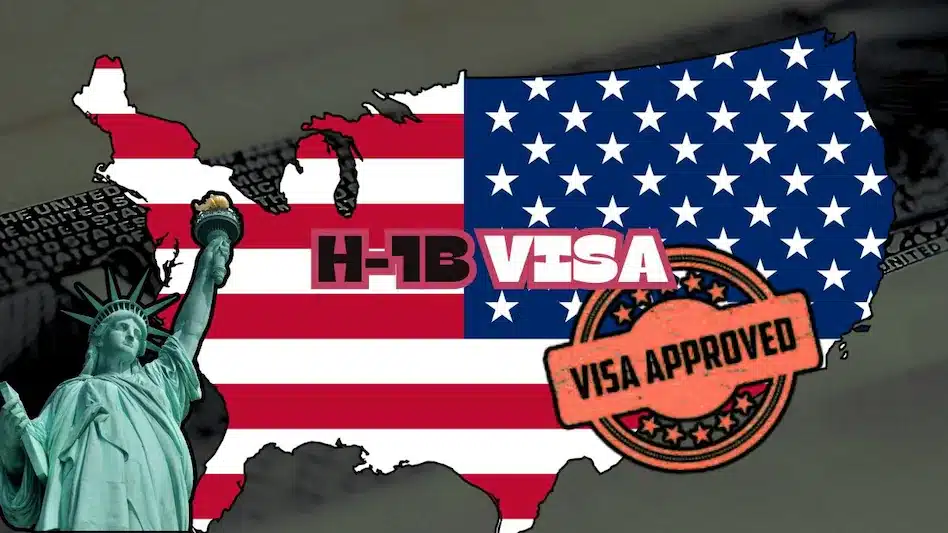The H-1B Visa Debate: Aspirations and Concerns

The H-1B visa program has long been a topic of heated debate in the United States. This visa allows skilled foreign workers to live and work in the U.S. for up to six years. It has become a pathway for many, especially from India, to pursue their dreams in America. However, the program faces scrutiny and criticism, particularly regarding its impact on American workers and the immigration system. As the political landscape shifts, many aspiring professionals, like Ashish Chauhan from India, find themselves caught in the middle of this contentious issue.
The H-1B Visa Program: An Overview
The H-1B visa program has been a cornerstone of U.S. immigration policy for over three decades. It is designed to attract skilled workers in fields such as science, technology, engineering, and mathematics (STEM). In 2023, Indian nationals received a staggering 72% of H-1B visas, followed by 12% for Chinese citizens. Most H-1B visa holders work in computer-related jobs, earning a median annual salary of $118,000. This program has been praised for bringing global talent to the U.S. and fostering innovation.
However, it has also faced criticism for allegedly undercutting American workers. Critics argue that the influx of foreign workers can lead to job displacement and wage suppression. The debate intensified during Donald Trump’s presidency, when his administration implemented stricter scrutiny of H-1B applications, resulting in increased denial rates. The current political climate raises questions about the future of the program and its implications for skilled workers seeking opportunities in the U.S.
Concerns Among Aspiring Professionals
For many aspiring professionals, the H-1B visa represents a dream opportunity. Ashish Chauhan, a 29-year-old finance professional from India, hopes to pursue an MBA in the U.S. next year. However, he expresses concern about the ongoing immigration debates and the potential backlash against Indian nationals. “My worry is that this resistance to H-1B visas could spark animosity towards Indians living there,” he says.
The stakes are high for individuals like Chauhan, who rely on the H-1B program to achieve their career goals. A Pew Research report indicates that U.S. immigration rose by 1.6 million in 2023, the largest increase in over two decades. As immigrants now make up over 14% of the population, many Americans fear that this surge could harm job prospects and hinder assimilation. With India surpassing China as the leading source of international students, the pressure on the H-1B program intensifies. Many Indian students rely on loans to study in the U.S., and any visa restrictions could jeopardize their financial stability.
The Impact of Political Changes on the H-1B Program
The political landscape in the U.S. significantly influences the H-1B visa program. Under Trump’s first term, efforts to restrict the program peaked, leading to increased scrutiny and higher rejection rates. Immigration scholar Stephen Yale-Loehr notes that it is unclear whether similar restrictions will be implemented in a potential second Trump administration. Some officials advocate for preserving the H-1B program, while others push for broader immigration restrictions.
The uncertainty surrounding the H-1B program creates anxiety for many skilled workers. Atal Agarwal, who moved back to India after facing challenges with his H-1B visa, describes the situation as unstable. “If you lose your job, you only get 60 days to find a new one,” he explains. This precariousness highlights the need for a more streamlined pathway to permanent residency for H-1B holders. Many individuals view the program as a stepping stone to a green card, but the lengthy wait times can be discouraging.
Addressing the Criticism: A Balanced Perspective
Despite the criticisms, proponents of the H-1B visa program argue that it plays a crucial role in the U.S. economy. Many Indian tech firms have hired and supported American workers, contributing to the local economy. The median wages for H-1B visa holders are often more than double the U.S. median, countering claims of wage suppression. Furthermore, companies invest significant resources in legal and government fees to secure these visas.
The H-1B visa program is often conflated with broader immigration issues, making it a sensitive topic. Shivendra Singh, vice president of global trade development at Nasscom, emphasizes that the program is designed for high-skilled workers and should not be viewed through the lens of illegal immigration. As India works to ensure the program’s stability, the focus remains on the strong economic partnership between the two countries.
Observer Voice is the one stop site for National, International news, Sports, Editor’s Choice, Art/culture contents, Quotes and much more. We also cover historical contents. Historical contents includes World History, Indian History, and what happened today. The website also covers Entertainment across the India and World.

